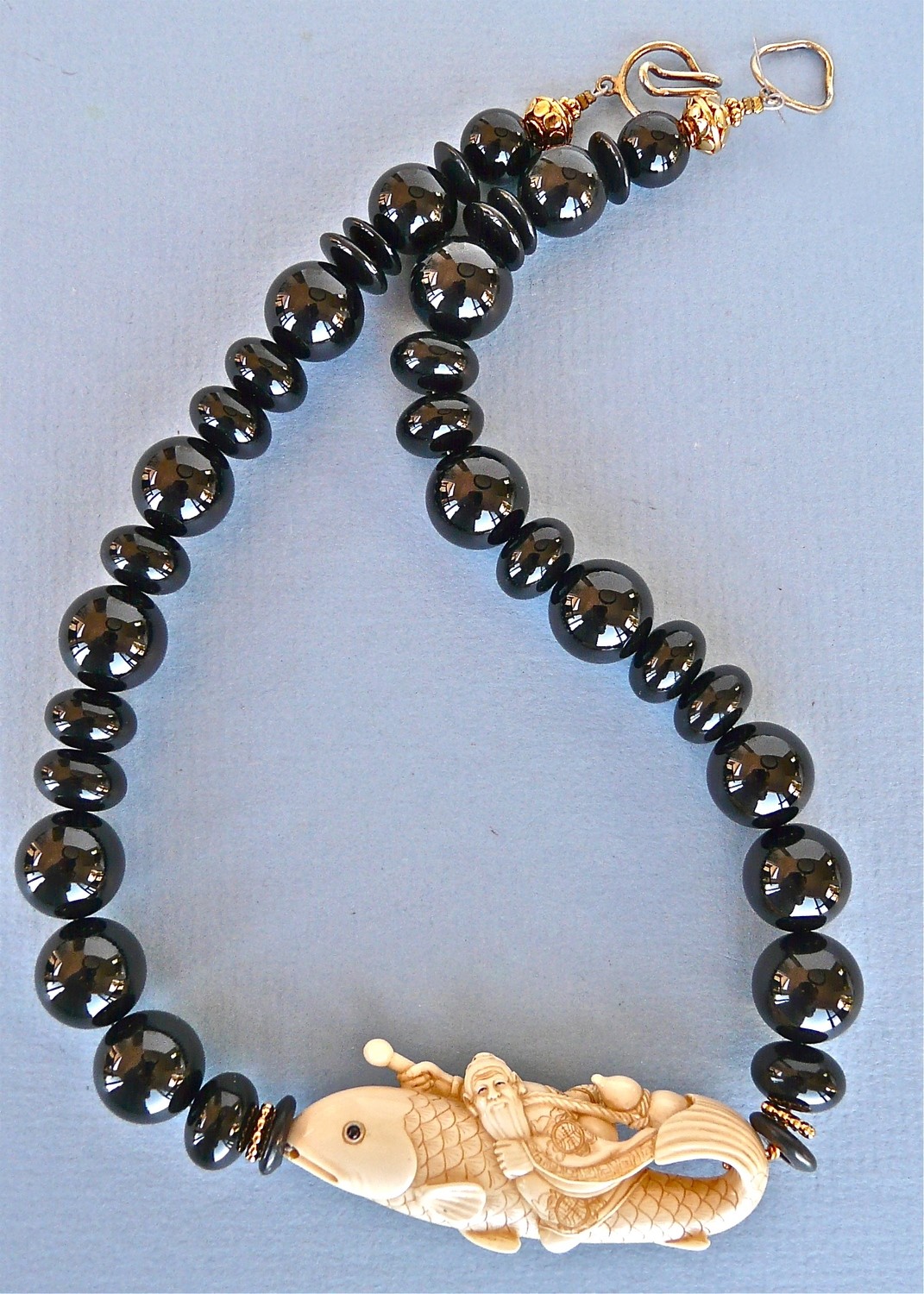Mammoth God of Longevity Riding Fish, Onyx Necklace
This unique necklace is made with an mammoth ivory netsuke that is the god of longevity riding a fish. I have beaded the necklace with 12 mm to 15 mm black onyx beads in a variety of shapes. The necklace is 20 1/2” around including the netsuke and is finished with a large 18k gold vermeil hook clasp. The netsuke is 2 3/4” long by 1” high and is beautifully carved showing the fish and the god of longevity in great detail. Both the god and fish are etched with a design - the fish with scales and the god with a desgn on his robe of longevity symbols.
The God of longevity happiness and wealth, Fukurokuju or Shou-xing, one of the gods of good fortune is symbolic of a long and healthy life. Legend has it that Shou-xing lives in a palace at the South Pole surrounded by a garden of aromatic herbs. He is often displayed in the home to promote good health and long life to the occupants.
The fish is symbolic of abundance, prosperity, wealth and persistence. It is also believed to represent an advantage in business.
Known as the gem of the midnight hour onyx is a type of quartz.
The netsuke is a miniature carving, usually less than two inches high, created by Japanese and Chinese artists for over three hundred years. They portray every aspect of their life and culture, as well as characters from Japanese folk stories. These carvings were traditionally used to prevent the cord attached to a gentleman's medicine box or tobacco pouch from slipping through the belt of his kimono. Today, they are highly collectible works of art. Traditionally, netsukes have been carved from mammoth and elephant ivory, ebony, fossil walrus tusk, mahogany, rosewood and hippopotamus tooth. The netsukes, often signed by the artist, are getting harder to find as the detail in each piece takes patience and time and the younger Chinese are not so interested in pursuing this art form. . Many of these pieces are displayed in museums and demand high prices at art auctions - from a few hundred dollars to a few thousand depending on the quality of the carving and the artist.
Mammoth Ivory comes from tusk of the extinct mammoth elephant that lived on the Earth from about 4.8 million to 4,500 years ago (Pliocene era). Because they are extinct they are not endangered and therefore, are legal and save the African elephant. The artisans that carved elephant ivory are now carving mammoth ivory that is recovered in Siberia. Using mammoth ivory encourages the preservation of the African elephant.
